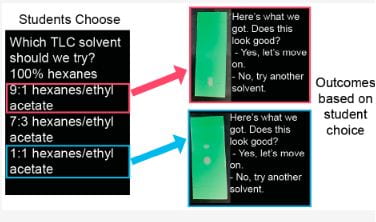Author: Geidy Mendez, Ph.D. Candidate in Political Science
As a political science undergraduate student, I quickly realized that political science classrooms did not bring me much joy. Maybe it was because as a first-generation college student, I had not been aware of the rigorous reading and writing skills needed to excel in the courses. My realization came to a head as I enrolled in Latino and Caribbean Studies and became involved in student organizations. In both spaces, I finally felt seen and heard by peers and professors. As a student organizer, I realized that the content from my Political Science classrooms could be more powerful when tied with the surrounding community’s engagement and usage of visual arts.
With my story in mind, I want to focus this post on what current and future educators in Political Science classrooms, such as myself, can do to retain and engage with students. Specifically, I refer to “design thinking” and “flipped classrooms” as a method that introduces students to creative outlets such as photography that reinforces community knowledge and content they are learning in the classroom.
Flipped Classrooms
Flipped Classrooms focused on introducing students to learning outside of the classroom. Cobbs (2015) and Jenkins (2015) define a flipped classroom as students participating in activities inside and outside the classroom instead of traditional lectures. The goal of a flipped classroom is to encourage student-centered learning to motivate them to think critically of content rather than just retain information. I specifically examine the usage of flipped classrooms in the classroom, both small and large classrooms.
Large Classrooms: Technology and Group Work
It is no surprise that large-scale political science classrooms such as Intro to American Government can be hard for student engagement. Flipped classrooms aim to reshape large-scale classrooms to be both a mix of traditional lectures and in-class and outside class activities. Shannon Jenkins (2015) address concerns of capacity, feasibility, and time constraints that flipped classrooms present in these large-class classrooms. Their experiment of flipped classrooms showed that flipped classrooms can provide students with a base level of background knowledge as it encourages students to interact with each other and reflect on their past experiences in connection to the content. They specifically used technology (iClickers, audio, and videos) to introduce students to content beyond traditional lectures. Wendy Cobb (2015) also found that group work in a flipped classroom setting improves student perception of the class and creates positive attitudes toward the class. This is of critical importance as students from varying identities and academic backgrounds need to be motivated to participate and enjoy large-scale classrooms.
Small Classrooms: Photography and Ballots
On the other hand, small-scale classrooms allow students to explore flipped classroom activities outside of the classroom. Melanie Bowers (2019) introduces student-generated photography to encourage creativity for students. Students are assigned a “show and tell” assignment to identify key concepts, take a picture of them in their communities, and then present to the class. Bower echoes that this approach motivates students to connect the “readings to reality” as they are surrounded by what they are learning, even when they do not know it. Kim Dionne’s (2023) usage of “design thinking” takes flipped classroom to another level as students apply theories and concepts learned in the classroom and design a ballot that is representative of what they have learned. Students are conducting hands-on approaches to how politics work while they learn the concepts.
Bell hooks writes, “no teaching is politically neutral,” which I center in introducing and using teaching frameworks that allow students to see politics around them and in themselves. I hope that my teaching pedagogy embodies what bell hooks has established in teaching as a political act of healing, joy, and constant learning. I invite you all to make your classrooms filled with student engagement that centers on community, art, and creativity, and generally welcomes students to practice what they are learning.
References
Bowers, M. (2019). Show Me What You’re Thinking: Using Student-Generated Photography to Flip the Political Science Classroom. Journal of Political Science Education, 15(4), 498-506.
Dionne, K. Y. (2023). Teaching Political Science using Design Thinking: Insights from “Contemporary African Politics” and “Elections around the World”. Journal of Political Science Education, 19(1), 16-33.
hooks, b. (2014). Teaching to transgress. Routledge.
Jenkins, S. (2015). Flipping the introductory American politics class: Student perceptions of the flipped classroom. PS: Political Science & Politics, 48(4), 607-611.
Whitman Cobb, W. N. (2016). Turning the classroom upside down: Experimenting with the flipped classroom in American government. Journal of political science education, 12(1), 1-14.

